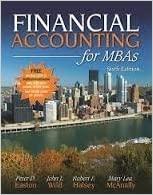George Alexander pays $9,300 in tuition and fees in December 2017, and his child began college in January 2018. He filed his 2017 tax return on February 14, 2018, and claimed a Lifetime Learning Credit of $1,860. He claimed no other tax credits. After he filed his return, his child withdrew from two courses and George received a refund of $2,900. He must refigure his 2017 Lifetime Learning Credit using $6,400 of qualified education expenses instead of $9,300. After George refigures the credit he determines his tax liability increased by what amount? A. $0 OB. $580 C. $1,280 D. $1,860 All of the following child and dependent care expenses may qualify as work-related expenses for the Child and Dependent Care Credit except O A. Expenses for a child in nursery school, preschool, or similar programs for children below the level of kindergarten O B. Expenses that allow the taxpayer to work or look for work G. The cost of sending a child to a day camp specializing in computer technology D. The cost of sending a child to an overnight camp A tax practitioner must keep the records described in Part IV of the due diligence checklist at the bottom of Form 8867 - Paid Preparer's Due Diligence Checklist. He or she must keep those records for 3 years from the latest of all of the following dates except: A. Due date of the tax return B. Due date of the tax return including extensions C. Date the return was filed (if the tax practitioner is a signing tax return preparer electronically filing the return) D. Date the return was presented to the taxpayer for signature if the tax practitioner is a signing tax return preparer not electronically filing the return) In 2017, Henry is a teacher who has satisfied the minimum requirements for teaching. His employer requires him to take an additional college course each year to keep his teaching job. The courses will not qualify Henry for a new trade or business. All of the following are true regarding work-related education except: A. The courses are qualifying work-related education even if Henry eventually receives a master's degree O B. The courses are qualifying work-related education even if Henry eventually receives an increase in salary because of this extra education O C. The course requirement serves a bona fide business purpose of his employer D. The courses are not qualifying work-related education because they are not part of a program that will qualify Henry for a new trade or business Bill donated $100 to the American Red Cross, $200 to the Boy Scouts of America, and $300 to his neighbor whose home was destroyed by an earthquake. How much is Bill's deduction for charitable contributions? O A. $100 B. $300 OC. $400 D. $500 In 2017, which of the following expenses that the taxpayer incurs as an investor is deductible? O A. Fees the taxpayer pays to a broker, bank, trustee, or similar agent to collect investment income, such as taxable bond or mortgage interest OB. Transportation and other expenses the taxpayer pays to attend stockholders meetings of companies in which he or she has no interest other than owning stock OC. Interest on money the taxpayer borrows to buy or carry a single-premium lfe insurance, endowment, or annuity contract OD. Interest on money the taxpayer borrows to buy or carry a life insurance, endowment, or annuity contract if he or she plans to systematically borrow part or all of the increases in the cash value of the contract In 2017, Ron pays $25 each quarter for a state property tax based only on the value of his boat. What amount of this personal property tax is deductible on his Federal tax return? A. $O O B. $25 C. $50 O D. $100 Which of the following items, generally, is deductible as a real estate tax? A. Property tax paid through an escrow account attached to a mortgage loan O B. Taxes for local benefits, such as assessments for streets C. Itemized charges for services O D. Transfer taxes In 2017, Bill Jones drove 3,800 miles for medical reasons. He spent $500 for gas, $30 for oll, and $100 for tolls and parking. Using either actual expenses or standard mileage rate, what is the largest a in his medical expenses on his tax return? mount he can include for car expenses OA. $630 B. $658 O C. $688 O D. $746 Renee works at Indigo Inc. and attends school part-time as part of her company's educational assistance program. In 2017 her company reimbursed her a total of $6,250 for tuition, books, supplies, fees, etc. related to her schooling. How much of this amount can Renee exclude from her gross income? A. $0, this is a company sponsored benefit and does affect the individual's return OB. $5,250, the maximum exclusion allowed under an employer's educational assistance program C. $5,750 the maximum exclusion allowed under an employer's educational assistance program D. $6,250 the maximum exclusion allowed under an employer's educational assistance program
















